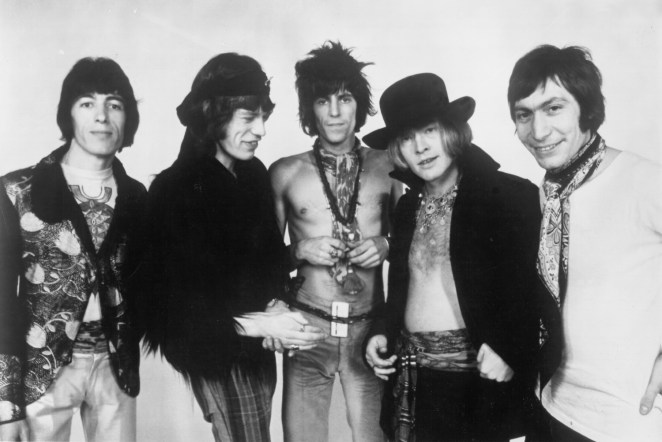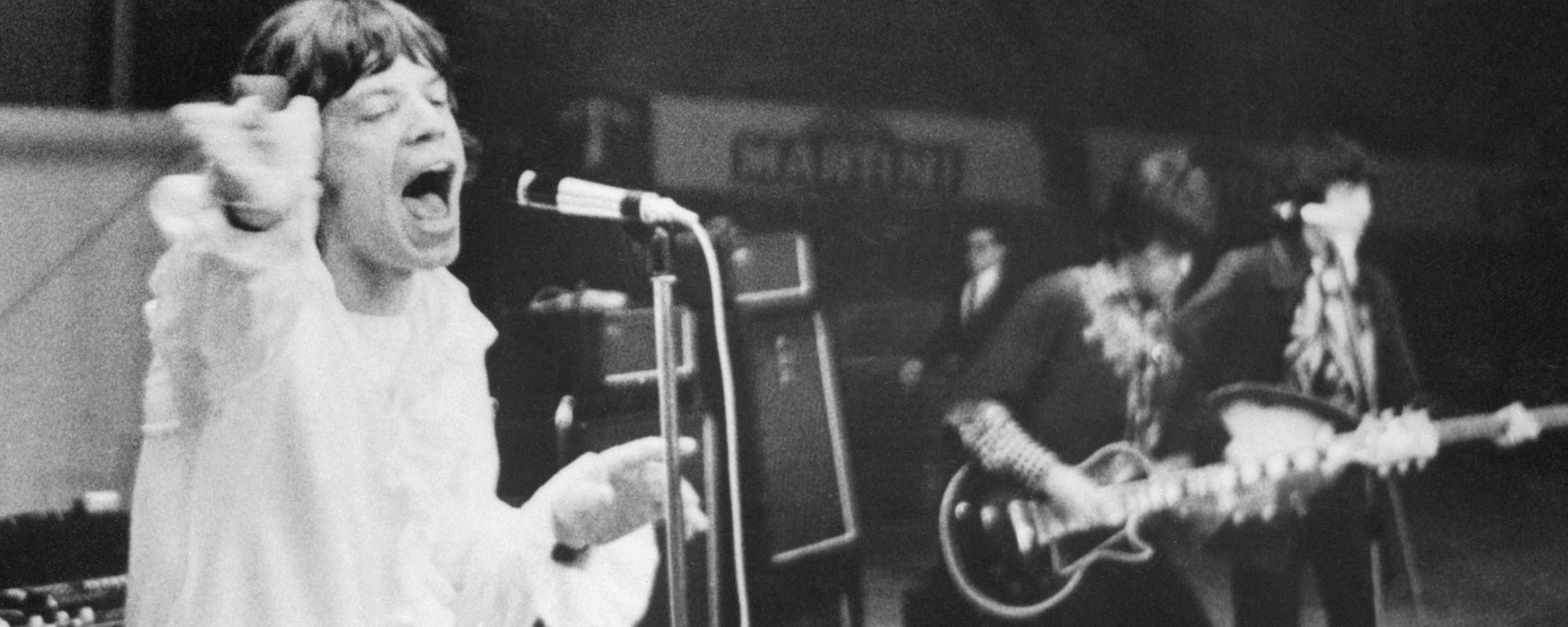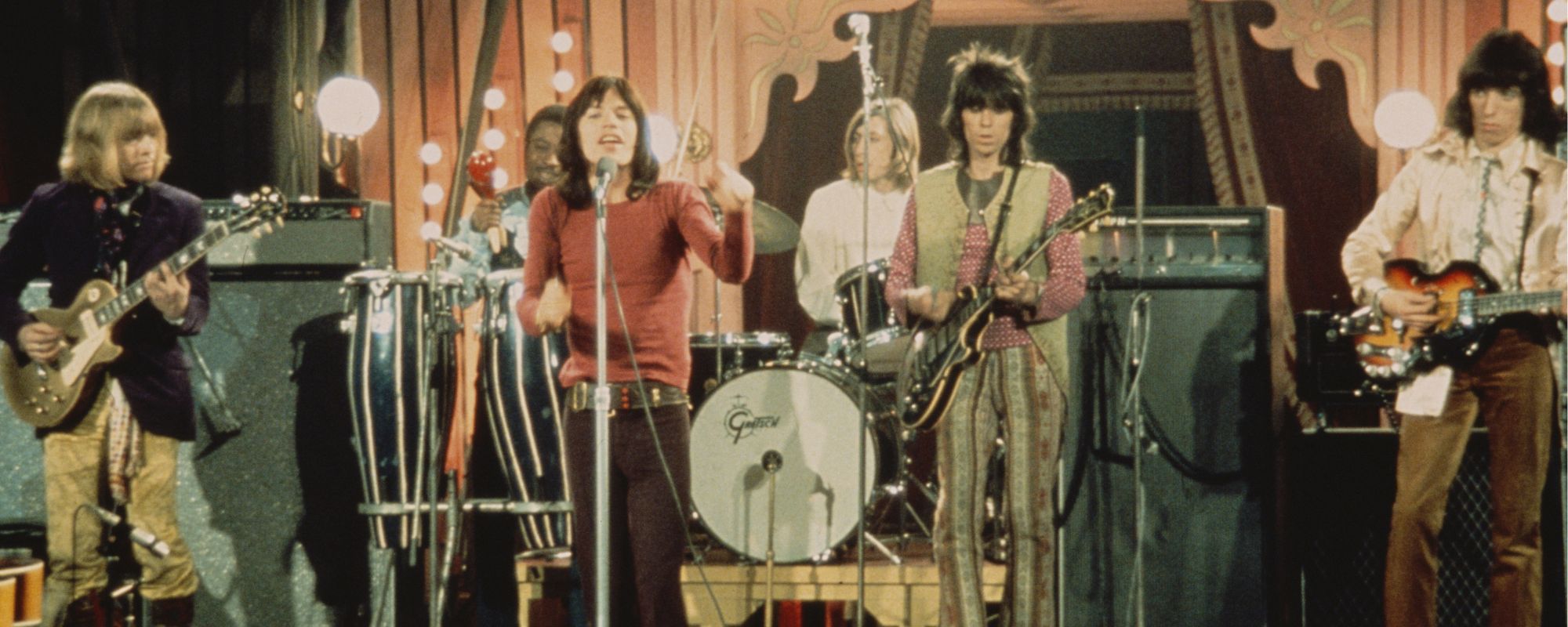On March 17, 1968, 25,000 demonstrators corralled on Grosvenor Square in London to protest the U.S. involvement in the Vietnam War. Somewhere in the sea of protestors was British actress Vanessa Redgrave and a 24-year-old Mick Jagger.
As the group made their way to the American Embassy, police interjected and a riot broke out, which resulted in 200 people being hospitalized and nearly 250 arrested. Before things turned violent, Jagger had already made his leave, since his celebrity was getting in the way of the cause. Shortly after the protests, the civil unrest in the U.S. and Europe around the war led Jagger to write “Street Fighting Man.”
Released on the Rolling Stones‘ 1968 album Beggar’s Banquet, “Street Fighting Man” was the Stones’ first protest song. Before then, the band rarely had any politics bent into their tunes. “Street Fighting Man” was different. It was a call to action, to protest and make change, from the streets on up, and feeling somewhat powerless when you’re in a band—Well, now what can a poor boy do / Except to sing for a rock and roll band?
Videos by American Songwriter
Banned for Being “Subversive”
Originally Jagger called the song “Did Everybody Pay Their Due?” and the story followed an Indian chief and his family before the lyrics were completely switched up to reflect what was happening around the war.
Shortly after its release, “Street Fighting Man” was banned on most radio due to the risk of inciting more violence. “The radio stations that banned the song told me that ‘Street Fighting Man’ was subversive,” said Jagger. “‘Of course it’s subversive, we said. It’s stupid to think you can start a revolution with a record. I wish you could.”
Everywhere I hear the sound
Of marching, charging feet, boy
‘Cause summer’s here and the time is right
For fighting in the street, boy
Well, now what can a poor boy do
Except to sing for a rock and roll band?
‘Cause in sleepy London Town
There’s just no place for street fighting man, no
Hey, think the time is right
For a palace revolution
‘Cause where I live the game to play
Is compromise solution

“Our generation was bursting at the seams.”
At the time, Richards had a riff in his head and recorded it on acoustic guitar a few years earlier but didn’t know where it would end up until Jagger presented his protest song. “Our generation was bursting at the seams,” said Keith Richards in 2013.
By the time the band hit Olympic Sound Studios in London, “Street Fighting Man” melded with Charlie Watts‘ antique drum kit, Richards on guitar and bass, Brian Jones on sitar and Traffic’s Dave Mason contributing a shehnai, an Indian reed instrument.
“‘Street Fighting Man’ is one of my favorite Rolling Stones songs—probably because the music came together through a series of accidents and experimentation,” said Richards in 2013. “We recorded it in a totally different way than anything we had done up until that point and the results were pretty exciting and unexpected.”
Richards had most of the melody that would end up in the song by late 1966, or early ’67. “I couldn’t figure out how to get the sound I wanted,” said Richards. “It’s hard to explain. If you think of a melody as a song’s shape, then the sound is its texture. The two were inseparable in my mind. I tried recording the melody in the studio in ’67 but nothing happened. So I took the concept home to my Redlands farmhouse in Sussex, England, to work on it.”
He added, “That’s where the vision met reality. When we finished recording ‘Street Fighting Man’ and played back the master, I just smiled. It’s the kind of record you love to make.”
Photo: Michael Ochs Archives/Getty Images













Leave a Reply
Only members can comment. Become a member. Already a member? Log in.